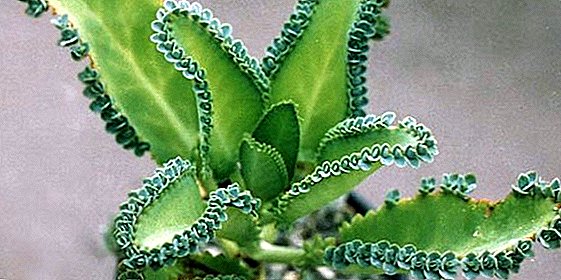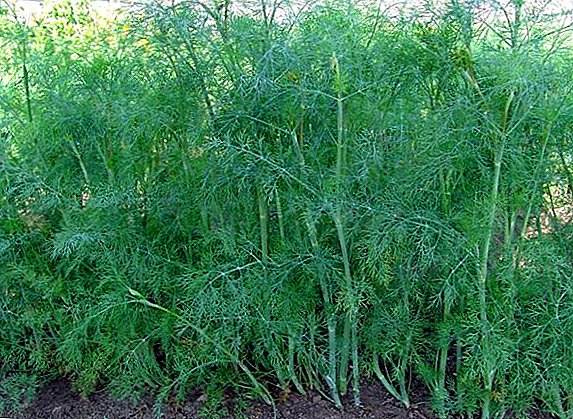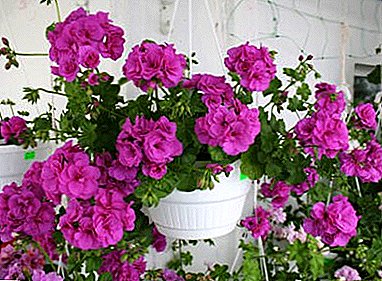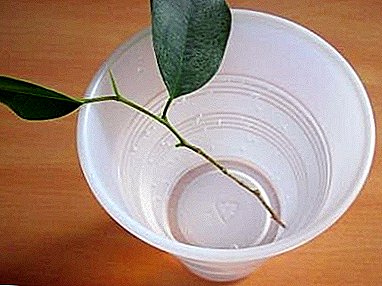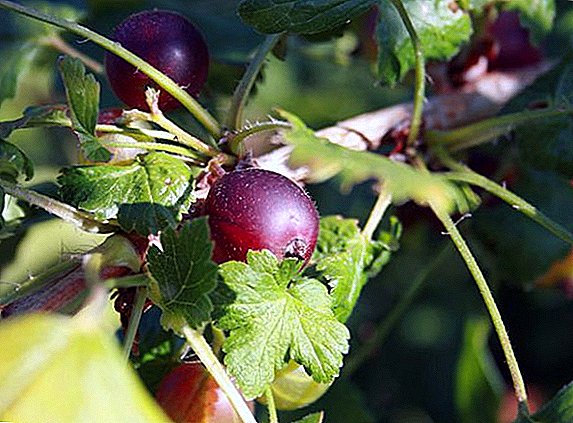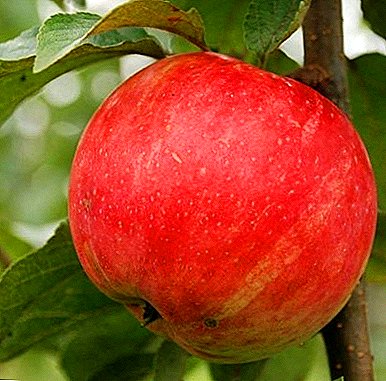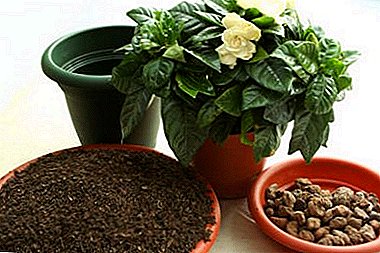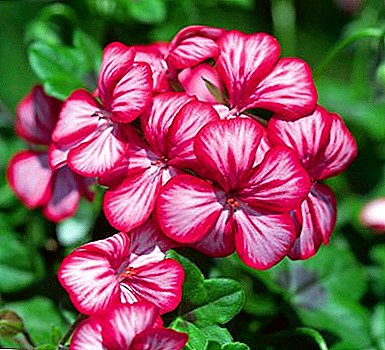
For a long time no one is surprised by bright geranium buds on the windowsills. Erect bushes of zonal geranium have long settled in homes and offices.
But the ivy-shaped view of this family is not as famous as its relative - the zonal one, but gradually gains popularity among gardeners.
From the article you will learn about the history of the plant and its appearance, what are the varieties of geraniums and how they look. Also presented to you are tips on planting a flower and caring for it, features of reproduction and what diseases and pests are exposed to.
Botanical description and history
Ivy geranium belongs to the geranium family, genus - geranium (Geranium). Its homeland is the Southern regions of Africa, where in nature the plant lodges on high hills and cascades down the slopes. Therefore, the flower perfectly tolerates a temporary lack of moisture and is a thermophilic and light-loving plant.
Ivy (or ile-leaf) geranium is an ampelous plant, a half-shrub capable of growing up to 1 m in height. Due to the fact that the shape of the leaves is similar to ivy (five-lobed, fleshy, whole), the plant got its name. The width of the sheet is from 3 to 6 cm. The color is green, sometimes with streaks or a rim of white.
Star-shaped flowers of various colors and shades. Collected in umbrella inflorescences, the diameter of which may be 8 cm. Large inflorescences may consist of 30 flowers. The average flower size is 1.5-2, 5 cm, but more impressive specimens can reach 4 cm.
Appearance
The flowers of ivy-shaped geraniums are distinguished by a wide variety of colors and shades: white, scarlet, red, lilac, pink. The appearance of inflorescence resembles a peony. The leaves are smooth to the touch, the length of the branches - 70-90 cm. This plant differs from other species by hanging stems and more rigid leaves.
Popular varieties with photos
Next on the photo you can see some popular varieties of ivy or ivy gelushennoy.
Over the past three centuries, breeders managed to bring many different varieties of ivy-like geraniums that feel comfortable at home and in the open air.
"Amethyst"

A very popular ivy geranium variety used in making flower baskets. The the variety branches well and develops quicklytherefore, in the summer it is often planted in garden vases, and in the winter it is brought into the room. It blooms with large terry buds of crimson and pink shades, similar to roses.
"Dacora Pink"

A plant with large leaves of lime color is beautiful even when it does not bloom. The flowers are simple, pink neon, consisting of five petals with several veins of red or crimson color.
"Marble Sunset"

Compact plant with decorative leaves, covered with spots of cream or light green color. In the sun, the leaves become golden or bronze. On the petals are clearly visible purple streaks.
The variety is very capricious, therefore it is not popular in home floriculture.
"Ise Rose"

This plant resembles a shrub rose.. The buds are painted white with a slight greenish tint. Blooms densely and continuously. In the bright sun, the flowers may become lilac.
"Rouletta"

This grade of ivy-like geranium is used for planting in large pots, both indoor and garden. Bush small in size with short internodes. Stems branch weakly, blooms profusely with simple white flowers with small pink dots and crimson rims on the petals.
"Tornado Fuchsia"

Magnificent variety of curly geraniums with rich green foliage. The shape of the flower resembles butterfly wings.. The flowers are painted in lilac with specks and streaks. From this variety create beautiful compositions for the street, the plant grows quickly, and with proper care blooms for a long time.
Where and how to plant it: rules and tips, instructions
Hanging flowerpots, baskets, boxes on the balconies are most suitable for planting gem-like geraniums. This light-loving plant should be located on the sunny side. Beautiful and harmonious, it also looks on the facades of houses. And if you plant this type of geranium on a flat plot, the plant will create a dense flowering carpet.
Prepare seedlings in spring or early autumn. To decorate the balcony, rooted plants are planted in boxes in one row, at a distance of 15 cm from each other.
Young plants should be regularly watered and fed with mineral fertilizer, which is applied in small portions.
Lighting and location
Ivy geranium prefers the sunny side, therefore in a room it is better to place a pot with a plant in a southeast or southwest window. Feels great outside and even on hot summer days, the plant does not wither and continues to bloom. But if geranium grows in partial shade, then its abundant flowering can not be seen.
Soil requirements
To the ground ampelous geranium is not demanding, however, for successful growth and development of the bush the soil should be loose and well drained. You can apply the following formulations:
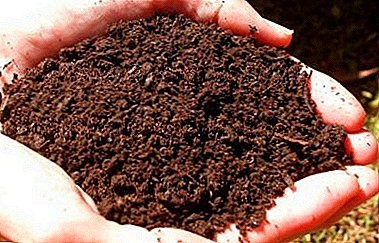 Universal soil for indoor plants is mixed with perlite, river sand and vermiculite in equal proportions (perlite and vermiculite can be changed to humus and peat).
Universal soil for indoor plants is mixed with perlite, river sand and vermiculite in equal proportions (perlite and vermiculite can be changed to humus and peat).- Land from the garden, taken under bushes or trees, will do.
- 8 parts of sod land, 2 parts of humus, 1 part of river sand.
- In equal proportions: turf, leaf earth, peat and sand.
Ivy geranium feels comfortable in a loose nutrient substrateIn which a little clay is added.
How to care?
In order for ileum geranium to feel comfortable, it needs to create favorable conditions:
- Water the flower in hot weather often, but in small portions. In winter, watering should be reduced to 2-3 times a month and ensure that water does not fall on the leaves.
- In spring and summer, feed with phosphate and potash fertilizers three times a month. Curly geranium and magnesium sulphate will be useful - it contributes to long-term flowering, but nitrogen fertilizers reduce flowering of the plant.
- At the end of February, they do pruning geraniums and pinch shoots - this will contribute to tillering and more abundant flowering.
- Repot the plant once every two years in the spring, the pot should not be too large.
Good to know! Ivy geranium tolerates replanting at any age.
Common diseases and pests
The plant may be attacked by pests:
- Thrips - appear as growths on the back of the leaf, which leads to their deformation and the appearance of spots on the flowers.
- Ticks often strike a face, look like yellow specks on leaves and can lead to their fading. The appearance of mites provokes heat and dry air.
- If twisted yellowed leaves appeared on the plant, then aphid settled on it.
The most dangerous disease of ivy geranium is black leg. It is very difficult to fight this disease, therefore, it is better to destroy such a plant so that the disease does not go to other flowers.
Breeding features
 Propagated by cuttings and seeds. Reproduction of ivy-shaped geranium cuttings:
Propagated by cuttings and seeds. Reproduction of ivy-shaped geranium cuttings:
- In spring, cut off the upper part of vertical shoots with a length of 7-10 cm, preferably with four healthy leaves.
- Dry the cuttings, sprinkle the cut sites with coal powder and plant them in loose soil to a depth of 3-4 cm for rooting.
- The first watering should be abundant, and all subsequent - moderate.
- When the roots appear, geranium is transplanted to a permanent place in prepared pots with soil.
It is possible to sow geranium seeds from April to November.
- The soil for seeds should be loose and light. To do this, you can mix universal soil, peat and coarse sand.
- Seeds deepened to half a centimeter, covered with a film, occasionally opening and sprinkling the earth with a spray.
They give excellent shoots, but extra light is needed in winter, since daylight hours should be at least 12 hours.
Unpretentious, bright blooming ivy-like geraniums look incredibly beautiful in hanging pots and can decorate a corner of any garden or room. In Europe, climbing geranium is used for landscaping arched structures. With proper care, this plant can bloom for six months without a break.


 Universal soil for indoor plants is mixed with perlite, river sand and vermiculite in equal proportions (perlite and vermiculite can be changed to humus and peat).
Universal soil for indoor plants is mixed with perlite, river sand and vermiculite in equal proportions (perlite and vermiculite can be changed to humus and peat).
